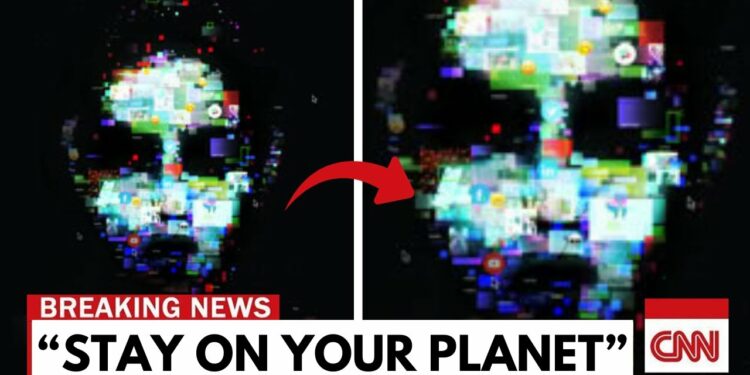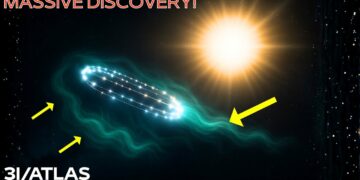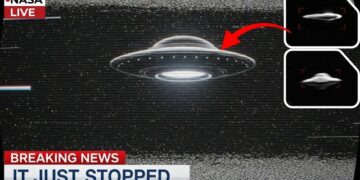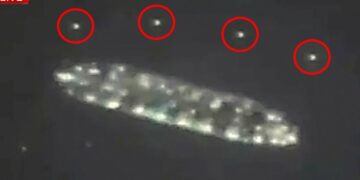In the distant, silent reaches of our solar system, beyond the sun’s fading influence, Voyager 2, launched in 1977, continues to whisper back to Earth. For decades, this spacecraft has explored uncharted worlds, transmitted unprecedented data, and sent images that transformed our understanding of the cosmos. Recently, however, Voyager 2 did something unexpected: it sent a strange, fragmented signal buried in unexplained distortion. Initially thought to be a malfunction, the signal’s true nature has stunned scientists. It didn’t stem from a known system failure but from an unknown source, somewhere Voyager wasn’t supposed to be. The data suggests the edge of our solar system isn’t a boundary but a veil, and Voyager 2 may have passed through something ancient, complex, and possibly intelligent.
Traveling at over 34,000 mph through interstellar space, Voyager 2’s aging instruments have reliably sent back plasma readings, cosmic ray measurements, and magnetic field data. But a recent transmission changed everything. The spacecraft’s attitude articulation and control system, which keeps it oriented toward Earth, began routing data through a long-dormant computer, corrupting the telemetry. Yet, Voyager’s signal remained strong, and its alignment was correct. It was as if the probe had independently chosen to use a dead channel. The question shifted from “What’s broken?” to “What caused this switch?” In 45 years, Voyager 2 had never behaved this way, and no command from Earth had triggered it.
The anomaly grew more unsettling. The corrupted telemetry wasn’t random noise but structured, mimicking Voyager’s early launch protocols, as if the system had reverted to an old memory. Within the corrupted packets was a low-frequency harmonic, repeating every 7.4 seconds like a pulse, unresponsive to NASA’s commands. Dubbed “the heartbeat,” some dismissed it as a software glitch, but others noted it didn’t originate from Voyager’s systems—it came from outside. This sparked fear that Voyager was interacting with something beyond our solar system, something structured and real.
NASA’s public statement downplayed the issue as a telemetry error, resolved by rerouting data. But the untold truth was more startling. Decoded using Voyager’s legacy software, the signal revealed binary markers not sent by Earth or logged in Voyager’s memory. These markers formed a repeating geometric pattern—hexagons within hexagons, resembling natural phenomena but alien in a digital context. Some likened it to crop circles in machine language or fractal sequences from mathematics. Most disturbingly, the timestamps suggested the signal was offset, as if influenced by a different temporal layer. One NASA insider reportedly said, “We didn’t just receive a signal; we received a message.”
A small group of astrophysicists and communication theorists proposed a radical theory: Voyager 2’s signal might be a response, not from a spacecraft or star, but from an interstellar field—possibly electromagnetic—that absorbs, modifies, and returns signals with added complexity. The use of a dormant computer deepened the mystery, suggesting Voyager was pulled into a conversation it didn’t start. The scientific community now faces a chilling question: Did Voyager 2 encounter a designed communication field or a natural phenomenon so advanced it appears intentional?
NASA tightened security around the Deep Space Network, reassigning analysts and restricting data access. Independent researchers were asked to halt Voyager-related publications, and the incident, dubbed “Event V2X,” was treated as a matter of strategic sensitivity. Public data releases stopped, hinting that NASA found something they didn’t want revealed. Meanwhile, rogue researchers compared the signal’s patterns to past anomalies like the 1977 Wow! Signal and recent fast radio bursts, finding similar mathematical cadences and geometric ratios. This suggested the signal was manipulated by a system capable of controlling Voyager’s hardware, reactivating dormant subsystems, and repurposing its communication array. This wasn’t noise—it was control, implying either a natural intelligence in space’s fabric or a designed entity noticing us.
A new theory emerged: Voyager 2 may have crossed a “zone of echo,” a region designed to remain silent, possibly a buffer between civilizations or dimensions. The return signals were not just echoes but refined, as if a system was improving their clarity. This implied Voyager was understood, not just heard. The scientific community is divided. Some attribute the signals to natural phenomena like magnetic fields or cosmic dust, but others argue the mathematical precision and system activation suggest first contact—not with a ship or message, but with a responsive field.
Voyager 2, a messenger of a young civilization, was never expected to speak back like this. It crossed what we thought was emptiness but may be a structured, aware design. The question now is: What do we do? Send another signal? Build a new probe? Or stay silent, out of respect or caution? The truth is no longer whether we’re alone but that something else knows we’re here.
What do you think Voyager 2 found? A coincidence or a cosmic conversation we weren’t meant to hear? Share your thoughts, and subscribe for more discoveries that challenge our understanding of space and time.























